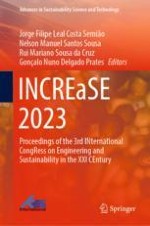This book includes the proceedings of the 3rd International Congress on Engineering and Sustainability in the XXI CEntury, INCREaSE 2023. INCREaSE is a congress with the aim to bring together valuable and novel scientific contributions that address the critical issues of renewable energy, sustainable building, sustainable manufacturing, sustainable food production and other sustainability science and engineering topics that have an impact in this diverse and fast-changing research area, both in academia and industry.
This 3rd edition of INCREaSE was held during July 5-7, 2023, in Faro, Portugal, organized by the Institute of Engineering and hosted by University of Algarve.
The areas to be covered were:
• Big data and data analytics applied to sustainability;
• Climate change and mitigation, carbon reduction;
• Combined heat and power and district heating systems;
• Control and optimization of renewable energy systems;
• Energy and environmental assessment in buildings and cities;
• Food loss and food waste solutions;
• Food safety and quality engineering;
• Information technology and artificial intelligence applied to sustainability;
• Nanoelectronic, nanomachining, and new nanomaterials;
• Smart buildings, smart cities, smart districts, smart countryside;
• Sustainability in water management;
• Sustainable building technologies;
• Sustainable development and circular economy;
• Sustainable energy generation and management;
• Sustainable food processing and packaging;
• Sustainable manufacturing and maintenance processes and technology;
• Sustainable technologies for risk mitigations;
• Sustainable transport, smart vehicles and smart roads; and
• Thermo fluids modelling and experiments for sustainability.
High quality and unpublished content is an essential feature for all included papers. Moreover, the Organizing Committee of the conference guarantees that contributions were subjected to an appropriate level of reviewing process.
